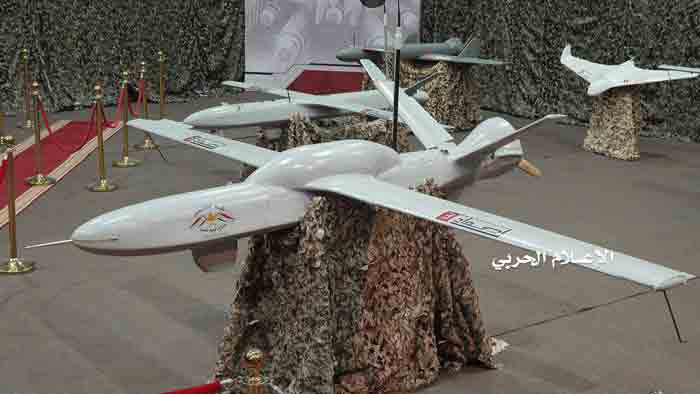Yemeni Drones: From the Moment of Revelation Until the Latest Operations
YemenExtra
In the face of a perfidious enemy, the Yemeni army and the popular committees had to work to develop their defensive and offensive capabilities, and this is exactly what took place.
The spokesman for the Yemeni Armed Forces, Brigadier General Yahya Saree, constantly speaks at press conferences revealing whether it is a new missile or a drone, some of which were manufactured or developed by Yemeni experts.
In this report, Almasirah Net explains how the Yemeni aircraft interfered in the battle, what does it consist of and how they inflicted the enemy in multiple operations.
On the 26th of February 2017, the Yemeni Air Force in Sana’a launched its first air battles against the Saudi-led coalition with a combat drone and 3 reconnaissance aircraft. The year of 2017 was the year Yemeni aircraft entered the battle, 700 days after the war was launched by the Saudi-led coalition.
The four drones are “Qassif 1 combat drone” and three other unmanned drones. The three carry out reconnaissance missions and are called “Hodhod 1”, “Rassid” and “Raqib” and were present at the first exhibition of unmanned aerial vehicles inaugurated by martyr President Saleh Al-Samad.
Military production
The Military Industrialization Department of the Yemeni Ministry of Defense at the time revealed that the four drones are the first of a newly established national program that the Military Industrialization Department has owned for the first time in its history.
Combat aircraft
“Qassif 1”, the length of which is 250 cm and its wing is 300 cm long, a flight time of 120 minutes and a range of 150 km. It is equipped with an intelligent target detection system and can carry a 30 kg warhead.
As for the features of the reconnaissance aircraft, “Hodhod 1”, the length of the hull is 150 cm, the wing length is 190 cm and a flight time of 90 minutes with a range of 30 km. It has a small radar segment, which is difficult to detect and a small amount of thermal radiation that reduces the possibility of being targeted by infrared-guided missiles.
As for the “Raqib” aircraft, it is 100 cm long, has a wing length of 140 cm, a flight time of 90 minutes and a range of 15 km. It also possesses a precise system of monitoring and tracking using laser and multiple imaging techniques used in the rough terrain and accompanies the infantry battalions.
Moving to “Rassid” drone, it is 100 cm long, has a wing length of 220 cm, a flight time of 120 minutes, a range of 35 km and is equipped with the latest photography techniques and a system of geographical survey and mapping with an electric motor.
It was only a few weeks ago that the Air Force in Sana’a announced, on April 11, 2017, that Aramco’s oil facility in Jizan and Abha Airport in Asir were bombed by drones.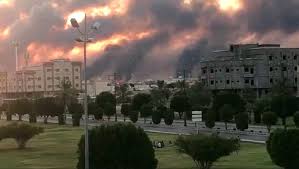
At that time, Saudi media outlets and activists confirmed that the air navigation movement was interrupted at the airport for hours. After that, the official spokesman for the “Alliance”, Al-Maliki, came out to condemn the operation. The Air Force also conducted another operation, which bombed, on the 19th of April 2018, Patriot (PAC-3) and the Emirati Forces Command Center in Mocha and Moshaj using “Qassif 1” aircraft“.
Apparently, Samad’s long-range drones fulfilled such a qualitative achievement and development that left the enemy in shock and astonished the rest of the world.
Long-range aircraft
Early June 2018, Sana’a uncovered in early June 2018 a series of long-range drones that carry multiple names “Samad 1, Samad 2, Samad 3” and “Kassif K2″, and they were displayed in the exhibition of the martyr Al-Samad. The exhibition was inaugurated by President Al-Mashat and contained models of ballistic and winged missiles as well as new drones.
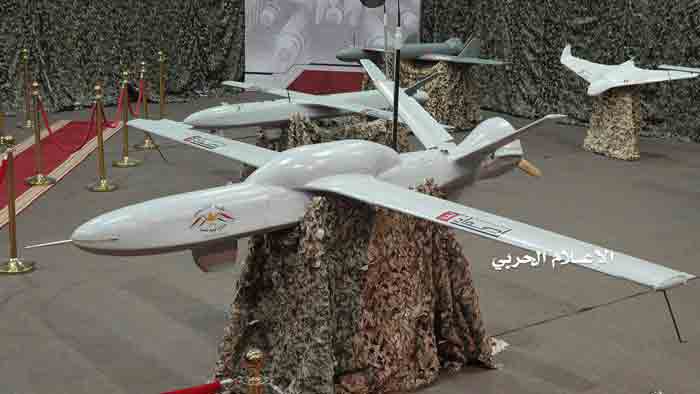
According to the spokesman of the armed forces, Brigadier General Yahya Saree, the features of the new aircraft, such as Samad 3 combat aircraft are a range of 1500 to 1700 km and that it has been successfully piloted in several operations targeting Saudi and Emirati airports. It can also explode from top to bottom, collide directly with the target and contains appropriate quantities of explosives.
He also explained that Samad 3 drone has advanced technology so that the interceptor systems cannot detect it.
Furthermore, Saree revealed the features of Samad 1 drone, which is a reconnaissance drone that can reach more than 500 km and has the ability to monitor targets directly from the operating room.
In the same context, “Kassif K2″ drone is characterized by fragmentation, which has the ability to mislead radar systems attempting to locate it. The drone explodes from top to bottom with a distance of 20 meters, has an effective destructive range between 80 × 30 meters and is characterized by its ability to carry appropriate quantities of explosives with the aim of doubling its destructive power.
A quantum leap
In 2018, unmanned aerial vehicles witnessed a quantum leap: from rudimentary reconnaissance drones with a range of 1 km to medium and large drones, long ranges, and more accurate attacks inside Yemen, Saudi Arabia and the UAE, most notably targeting Abu Dhabi Airport in July and Dubai Airport in September.
As for the year of 2019, it witnessed a qualitative and quantitative change in the drone attacks, whereas Sana’a declared 2019 “the year of unmanned aircraft”, confirming the ability to produce a drone every day.
The first half of 2019 was full of surprises and attacks, the most important of which was the success of “Qassif K2” to penetrate a military parade at the strategic Al-Anad base on January 10. The attack led to the killing of the head of the Military Intelligence Authority, Major General Mohamed Tamah, the deputy head of the authority in the Hadi government and 6 soldiers and officers.
On May 12, Aramco was attacked by 7 “Samad 2” drones, calling on Saudi Arabia to hold three (Gulf, Arab and Islamic) summits in Mecca.
The arrival of the drones to Aramco in Riyadh resembled a breach of the electronic warfare, the Air Force and the Air Defense since the operation took place after conducting a survey, identification of targets and the returning of the reconnaissance aircraft to Yemen without the knowledge of the Saudi regime.
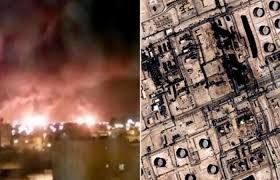
2500 offensive operations
Almost 2,500 offensive and reconnaissance operations were conducted by the Air Force during the years of 2018-2019. During the year of 2018, the Air Force carried out 38 offensive operations, including twenty-eight operations targeting coalition forces internally and 10 operations targeting military installations in Saudi Arabia and the UAE.
According to the army spokesman, Brigadier General Saree, there were dozens of joint operations, including two with the missile force, one with the missile force and the artillery unit, and two with the artillery unit.
In 2019, Brigadier-General Saree revealed that the offensive capability of the Air Force has doubled by 400% from what it was in the previous year. He confirmed that the operations of the Air Force during the year 2019 amounted to 2426 operations, including 2,087 reconnaissance operations and 5 joint qualitative attacks with the missile force, which confirmed capacity and efficiency to carry out painful strikes on the enemy.
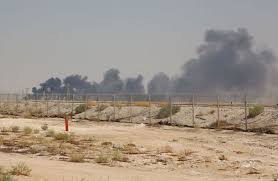
In addition, 196 operations targeted enemy bases, installations and airports, including the operation of Al-Anad, Al-Mokha and Al-Jala, as well as targeting Saudi airports and military installations. About 92 special operations also took place, including the targeting of Shaybah field and the 9th Ramadan operation, while the number of operations conducted by the Air Force and Artillery Unit reached 46.
An offensive beginning
The Yemeni Missile Force and the Air Force inaugurated the current year of 2020 with an offensive operation on February 21. The Yemeni Armed Forces revealed that the Missile Force and the Air Force conducted a joint operation in the Saudi depth. The statement of the armed forces announced by the Yemeni army spokesman confirmed that the operation was carried out with 12 drones of the type Samad 3, two-winged Quds missiles, and the long-rage ballistic missile Zulfiqar.
“The operation targeted Aramco and other sensitive targets in Yanbu and has hit its targets with high accuracy,” said Saree.

